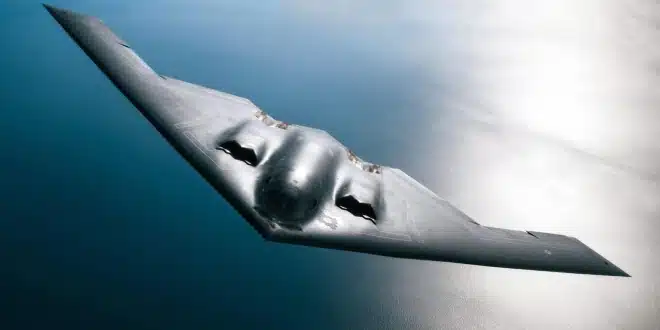The Northrop Grumman B-2 Spirit, commonly referred to as the Stealth Bomber, stands as a pivotal component of the United States Air Force’s strategic arsenal. Engineered for deep-penetration missions, the B-2 employs advanced stealth technology to navigate through sophisticated enemy air defenses, delivering both conventional and nuclear payloads with precision.
Design and Stealth Capabilities
The B-2’s distinctive flying wing configuration significantly reduces its radar cross-section, enhancing its ability to operate undetected. This design, coupled with radar-absorbent materials and specialized coatings, minimizes its visibility across various detection spectrums, including infrared and acoustic signatures. The aircraft’s aerodynamic efficiency allows it to perform missions at altitudes up to 50,000 feet, with an unrefueled range exceeding 6,000 nautical miles. Aerial refueling extends this range, enabling intercontinental operations without the need for forward bases.
Armament and Strategic Role
Capable of carrying up to 40,000 pounds of ordnance, the B-2 is equipped to deploy a variety of munitions. Its arsenal includes precision-guided bombs such as the Joint Direct Attack Munition (JDAM) and the GBU-57 Massive Ordnance Penetrator, designed for targeting fortified underground facilities. In its nuclear capacity, the B-2 can deliver B61 and B83 gravity bombs, reinforcing its role within the United States’ nuclear triad.
Operational History and Deployment
Since its introduction in 1997, the B-2 has participated in multiple combat operations. Its inaugural mission occurred during Operation Allied Force in 1999, where it conducted strikes over Kosovo. Subsequent deployments have included missions in Afghanistan, Iraq, Libya, and, more recently, operations targeting hostile entities in Yemen. These missions underscore the B-2’s strategic value in delivering precise, long-range strikes while minimizing exposure to hostile defenses.
Production, Maintenance, and Future Outlook
Originally, the U.S. Air Force planned to acquire 132 B-2 aircraft. However, post-Cold War budget constraints and shifting strategic priorities reduced the fleet to 21 units, with 20 currently operational following two incidents that resulted in the loss of aircraft. Each B-2 carries a substantial cost, with estimates exceeding $2 billion per unit when accounting for development and maintenance expenses. The aircraft’s sophisticated systems require intensive upkeep, and advancements in detection technologies, such as low-frequency radar and infrared tracking, present ongoing challenges to its stealth capabilities.
Despite these considerations, the B-2 remains a cornerstone of U.S. strategic deterrence. Its ability to deliver a wide range of munitions across vast distances with minimal detection continues to provide the United States with a formidable tool for both conventional and nuclear missions. As geopolitical dynamics evolve, the B-2’s role in ensuring national security and projecting power remains as critical as ever.


